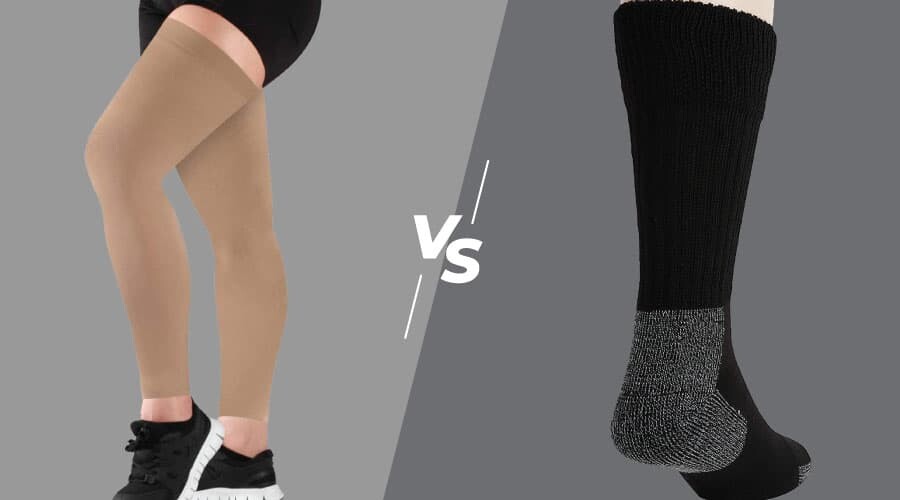Compression and diabetic socks are often mistaken to mean the same thing. But are they? Well, the answer is NO. These are two different garments with different functions. While the two have some similar features, they have unique designs and specifications.

Compression socks are tight-fitting and are effective in preventing legs swellings. Diabetic socks are ideal for diabetic patients. They are non-binding, moisture-wicking, and have cushions to protect your feet from injuries.
Read along to understand more about these two types of socks.
Compressions Socks:
Compression socks are unique socks that help improve blood circulation in your legs. They are efficient in pushing blood and fluid out from the legs to your heart. Compression socks apply varying pressure at different points of the legs. They are close-fitting at the ankles and less binding at the knees. This helps to create gradient pressure that helps drive the blood from the legs upward.
They are also effective in alleviating pain – thanks to their strong elastics. They have bands that start right at the ankle and spread to the knee. The strong elastics make it less ideal for diabetics as they hinder free blood flow.
Diabetic socks:
It is a known fact that diabetes can cause several feet problems. It can cause blood circulation problems, nerve damage (neuropathy), and pain in the legs. Diabetic socks have features that can help solve these issues.
For instance, they are seamless, and unlike compression socks, they have no elastic. Its smooth material aid prevents skin abrasion and injuries. Other features include;
- Extra padding on toes and heels to prevent friction-caused injuries
- Moisture-wicking properties to keep the feet dry and prevent bacterial growth
- Light color–most diabetic socks are white. White color enables a diabetic person (with neuropathy) to identify a cut or injury
Why should diabetics go for diabetic socks and not compression socks?
Diabetics are at risk of getting feet infections because of their low immunity. They, therefore, need to choose socks that offer adequate protection. Diabetic socks protect against bruises and injuries and help boost blood flow. Although compression socks improve blood circulation, it isn’t ideal for people with diabetes. This is because of their strong fabric and snug-fitting properties.
Socks Adviser Recommendation:
If you are a diabetic person, you need to choose socks that will enhance your recovery process. Diabetic socks are the best for this purpose. But, it is crucial that you first seek advice from your physician.
Parting shot
Compression socks are different from diabetic socks. They have distinct features and serve different functions. Diabetic socks are effective in preventing injuries and poor blood flow. Compression socks help prevent swelling and enhance blood circulation. They help avert muscle fatigue, pain, and fluid pooling in the lower legs.
Remember that the best socks are the ones that address your needs. So choose wisely.
